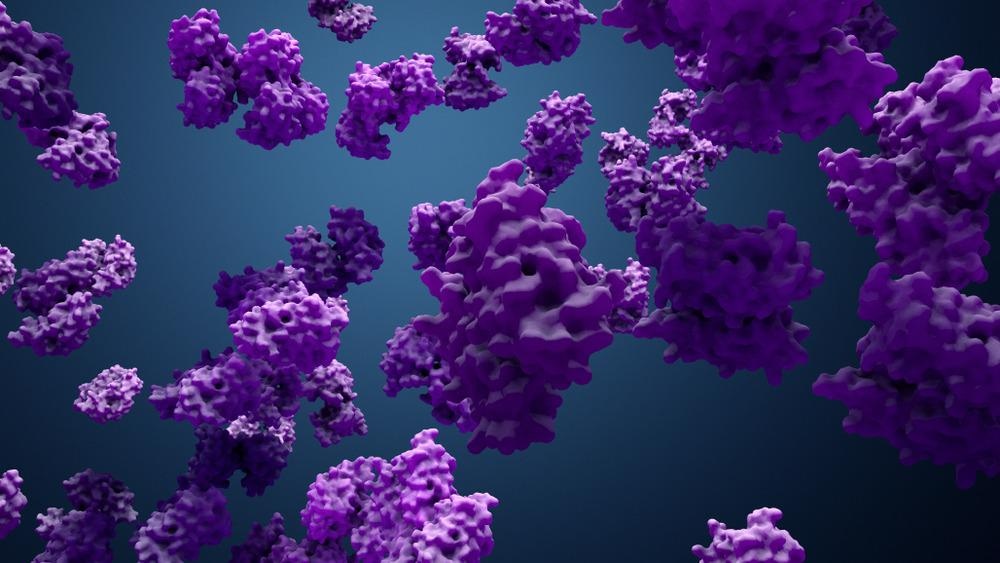Introduction
What is Flow Cytometry?
What is Protein Engineering?
How Flow Cytometry can be Used to Detect Protein Engineering
Summing Up
References
Flow cytometry is a useful analytical tool that can detect cells' characteristics within a population. The technique is used for multiple purposes, and this article will look at how it is used in protein engineering detection.

Image Credit: Design_Cells/Shutterstock.com
What is Flow Cytometry?
Flow cytometry detects cells or particles in suspension by separating them in a narrow, rapidly flowing stream of liquid. The sample is passed through a laser, which detects properties such as size, number of particles or cells, granularity, and fluorescence. Fluorescent markers, usually fluorescently labeled antibodies, are commonly used in flow cytometry experiments and can provide information on cellular processes and, for example, whether a cell is living or dead.
Fluorescently labeled samples are connected to the flow cytometer and are oriented with hydrodynamic focusing into a thin stream of liquid surrounded by a "sheath" of faster-moving fluid. A laser (or multiple lasers) is focused on this stream of moving liquid, and detectors are aimed at the same spot that detects forward scatter, side scatter, and fluorescent molecules. In combination with fluorescence from the particle, scattered light is identified by the detectors.
The fluctuations in brightness at fluorescence emission peaks are detected and analyzed by software, which provides data on the properties of the particles. Collecting sample data is termed "acquisition," and the software used can adjust parameters such as compensation for leakage between channels. Additionally, the software ensures that parameters are correctly set. The five main components of a flow cytometer are a flow cell, measuring system, detector, amplification system, and computer software.
What is Protein Engineering?
Protein engineering is used to synthesize new proteins. Additionally, the sequence and structure of existing proteins can be amended (engineered) to achieve desired functions. The field of protein engineering has significantly benefitted from advances in molecular force fields, structural bioinformatics, and increasing knowledge of the complex 3D structure of proteins. Computational approaches have been made possible due to advances in knowledge and technology.
Protein engineering is a relatively new discipline. There has been significant research into understanding protein folding and recognition to inform protein design principles. Protein engineering strategies fall into two categories; directed evolution and rational protein design. The two methods are not mutually exclusive, with researchers commonly applying both during protein engineering. Multiple protein engineering approaches include multiple sequence alignment, coevolutionary analysis, multivalent binding, and structural prediction.
Protein engineering is based on recombinant DNA technology. The classical rational design method involves site-directed mutagenesis, where specific amino acid sequences are inserted into a target gene. Site-directed mutagenesis can be performed with the site overlap method or whole plasmid single round PCR. Rational design is useful when a protein's sequence is known. However, the sequence is unknown in many cases, which facilitated the need for evolutionary methods.
Recent technological advances in high-throughput screening have provided opportunities for the advancement of the field. Flow cytometry is one technique that can provide relevant data which helps to inform protein engineering studies.
How Flow Cytometry can be Used to Detect Protein Engineering
In recent years, huge opportunities have arisen for the use of flow cytometry in protein engineering. Proteins can be engineered to have specific properties such as ligand binding, allostery, catalytic activity, and improved stability. Flow cytometry can detect the biomarkers for these engineered proteins in a high-throughput manner, sorting and counting hundreds, or even thousands, of particles per minute.
Cells that contain the engineered protein are fluorescently marked and passed through the flow cytometer, where they are detected and analyzed by software. Often, multiple screening rounds are necessary to find the engineered protein with the target functional properties. This multi-step process is carried out until the observed functional improvement in the protein is negligible or generated proteins satisfy the chosen criteria.
There are multiple ways of producing sequence diversity within engineered proteins, including random mutagenesis, homologous in vitro recombination, or nonhomologous recombination. Regardless of the method of creating sequence diversity, the main roadblock to evolutionary engineering techniques is the limitation of traditional screening processes for the vast library of protein sequences produced during protein engineering.
Flow cytometry has vast advantages for protein engineering due to its ability to detect expressed sequences in engineered cells quickly, providing researchers with a wealth of data that informs the selection of proteins with the properties of interest. Other techniques employed in protein engineering include phage display, biological assays that use reporter enzymes, and single-well assays.
Summing Up
Protein engineering is a relatively new field of study that is increasingly used to manufacture tailor-made proteins with various functional properties for purposes such as drug design. The need to analyze the large library of engineered proteins has facilitated the use of high-throughput methods in the field. Flow cytometry is one such technique that has shown potential to achieve this requirement, providing the data necessary for studies in a short period.
References :
Further Reading